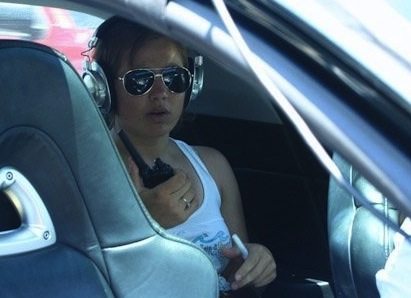 “We’ll fix it in post!”…I probably shouted this at least a hundred times while shooting my first feature. Let me back up a bit so I can make an attempt to defend myself to all the editors out there. I was graduating college and wanted to make a movie with all of my friends before we ran away to Hollywood to be big shots in the biz. I knew there was a director in me, and what better way to learn than to just do it? We threw together a script (more like a rough outline interspersed with lines of dialogue) and, while it was the hardest thing I had ever done, it was all I had ever wanted to do. Sure, I occasionally slept in my car, and spent most meals eating fries from the bottom of an In-n-Out bag, but we were shooting our movie.
“We’ll fix it in post!”…I probably shouted this at least a hundred times while shooting my first feature. Let me back up a bit so I can make an attempt to defend myself to all the editors out there. I was graduating college and wanted to make a movie with all of my friends before we ran away to Hollywood to be big shots in the biz. I knew there was a director in me, and what better way to learn than to just do it? We threw together a script (more like a rough outline interspersed with lines of dialogue) and, while it was the hardest thing I had ever done, it was all I had ever wanted to do. Sure, I occasionally slept in my car, and spent most meals eating fries from the bottom of an In-n-Out bag, but we were shooting our movie.
In the fast-paced, indie induced mess of making a feature film, I often thought, “post can suck it.” In the midst of lighting and sound issues, overall plot confusion, and guerilla-style, permitless shooting throughout southern California, thinking ahead was not an option; I was constantly playing catch up. “We’ll fix it in post” became our mantra.
Jump cut to present day.
INT. FEATURELESS OFFICE BURIED DEEP IN THE RECESSES OF THE VALLEY – NIGHT
The feature is in post, and lets just say the cutting room floor is not pretty. I could fill a novel with what I did wrong while shooting this movie, but instead I want to point out some big things that I took away from the experience, and hopefully save some future directors and producers never-ending headaches:
Holding the Cut – This is as good a place to start as any. Transitions have become a big thing for me during this post-process, and even more so with regard to exiting a scene. While watching clips to work with, I’ll often hear my voice yell “cut,” followed immediately by the actors dropping character. In reality, I’ve found that I’ve needed the scene to continue on just a few seconds longer to find a smooth edit point, letting them totally exit a doorway and leaving a clean empty space, or just letting the actor take a moment at the end of dialogue to react and be in the moment. Take your time at the end of scenes and give yourself the freedom to slow down the pace, if need be.
Allow your AD the Power of “Action!” – I worked as an AD for a few years, and I had some directors ask me to take the lead, while others wanted to retain control. Give your AD the control! Your AD is the one person on set entirely responsible for knowing when all the moving pieces are truly ready and standing by. I believe the director is one of those pieces. When we were shooting, I would often call “action,” and then an actor or lighting cue wouldn’t be ready. In watching the different takes, I can see where performances were affected by having to shoot multiple takes. It’s more difficult to reset everything then to have it ready in the first place, but most important is to create a good rhythm for everyone.
Make Sound a Priority – I approached some scenes with actors like, “lets discover moments together as we roll,” and I would talk to them during a scene. But, when I wanted the organic sounds of feet shuffling on the ground or traffic going by, all I could hear was my voice or other production ruckus. I’ve read that on some features, 90% of the dialogue is ADR, whereas on other features, it’s more in the range of 30%-40%. Trust me when I say you want to be in the world of the 30 percenters unless you’re Michael Bay and have an explosion going off nearby while your lead delivers an emotionally driven line of dialogue. Oh, and don’t forget the room tone!
Needless to say, I will call my editor before screaming, “We’ll fix it in post!”
Please check out a teaser for the feature, Roll Over Play Dead, that should be coming out on the festival circuit this year:
http://youtu.be/sRFQaUDD1IU

